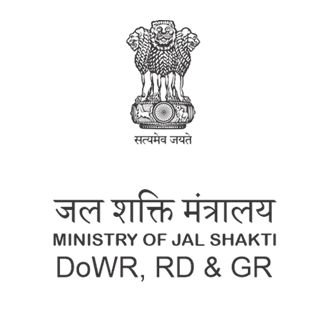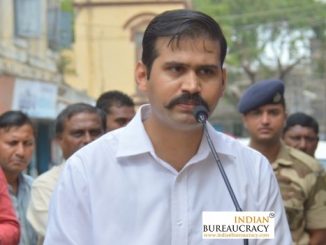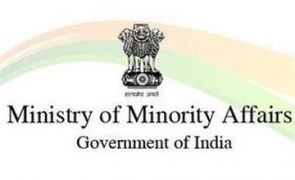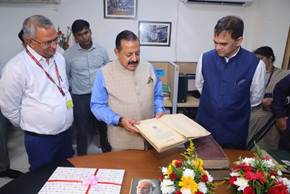
Central Government has formulated National Water Policy 2012 which inter alia contains provisions for rainwater harvesting like incentivizing revival of traditional water harvesting structures by States, encouraging rainwater harvesting to increase availability of utilizable water in urban and industrial areas, preference to urban and rural domestic water supply from surface water in conjunction with groundwater and rainwater, etc. The National Water Policy has been sent to all States/UTs for appropriate action.
Water being a State subject, steps for augmentation, conservation and efficient management of water resources are primarily undertaken by the respective State Governments. In order to supplement the efforts of the State Governments, Central Government provides technical and financial assistance to them through various schemes and programmes.
In order to effectively implement the rainwater harvesting across the country, the Government undertakes various activities in the form of special drives, schemes and programmes. Some of the major steps taken by Government of India in this regard are as follows:
- Jal Shakti Abhiyan-I (JSA-I) was conducted in 2019 in 1,592 blocks out of 2,836 blocks in 256 water stressed districts of the country and was expanded as “Jal Shakti Abhiyan: Catch the Rain” (JSA:CTR) in 2021 with the theme “Catch the Rain Where it Falls When it Falls” to cover all the blocks of all districts (rural as well as urban areas) across the country. “Jal Shakti Abhiyan: Catch the Rain” (JSA:CTR) -2022 campaign, the third in the series of JSAs, was launched on 29.03.2022 to cover all the blocks of all districts (rural as well as urban areas) across the country. In the current year, Jal Shakti Abhiyan: Catch the Rain 2023, 4th in the series of JSA, has been launched on 04.03.2023. Rainwater harvesting is one of the major components of the campaign. States/UTs have been advised to actively participate in JSA:CTR 2023 and have also been suggested to undertake rain harvesting activities under JSA:CTR. As per the information available, the following water related works/ afforestation works have been completed/ ongoing during the period 29.03.2022 to 03.03.2023:
| Water related works across the country in JSA: CTR 2022 | |
| Water Conservation and Rainwater Harvesting Structures | 12,28,553 |
| Renovation of Traditional Water Bodies | 2,67,472
|
| Reuse and Recharge Structures | 8,74,680 |
| Watershed Development | 16,28,726 |
| Intensive Afforestation | 78,38,36,035 |
- Government of India is implementing Atal Bhujal Yojana, a Central Sector Scheme with an outlay of Rs. 6,000 crore in identified water stressed areas of 8,220 Gram Panchayats (GPs) under 229 blocks in 80 districts of 7 States viz. Gujarat, Haryana, Karnataka, Madhya Pradesh, Maharashtra, Rajasthan and Uttar Pradesh with an aim to arrest decline in ground water level through community led sustainable groundwater management. The scheme is being implemented from 01.04.2020 for a period of 5 years. Allocation and utilization of funds for Atal Bhujal Yojana since its inception is as given below:
| Financial Year | Funds allocated | Funds utilized |
| 2020-21 | Rs. 125 crore | Rs. 123.03 crore |
| 2021-22 | Rs. 330 crore | Rs. 327.48 crore |
| 2022-23 | Rs. 1,170 crore | Rs. 1,155.37 crore |
- Watershed Development Component of Pradhan Mantri Krishi Sinchayee Yojana (WDC-PMKSY) has got rainwater harvesting as one of the activities under its Natural Resource Management (NRM) component.
- The scheme of Surface Minor Irrigation (SMI) and Repair, Renovation & Restoration (RRR) of Water Bodies have multiple objectives like expanding cultivable area under assured irrigation by improvement and restoration of water bodies inter alia increasing ground water recharge and revival of lost irrigation potential.
- Master Plan for Artificial Recharge to Groundwater- 2020 has been prepared by Central Ground Water Board in consultation with States/UTs which is a macro level plan indicating various structures for the different terrain conditions of the country.
- Central Ground Water Authority (CGWA) while granting No Objection Certificates (NOCs) for ground water abstraction envisages that the proponents shall install roof top rain water harvesting & recharge systems in the project area.
- Government of India has launched Atal Mission for Rejuvenation and Urban Transformation (AMRUT) in 2015 which focuses on development of basic urban infrastructure especially water supply & access to tap connection to every household in 500 cities. In water supply sector, ULBs/State may take up projects related to new/augmentation/rehabilitation of water supply system; rejuvenation of water bodies for water supply, rainwater harvesting and recharge of ground water etc. Further, AMRUT 2.0 has been launched in 2021 which covers all the statutory towns of the country to ensure universal coverage of water supply. It envisages rejuvenation of water bodies, urban aquifer management, promote recycle & reuse and rainwater harvesting to augment freshwater resources. The Aquifer Management Plan will also be prepared to focus on maintaining positive groundwater balance in urban aquifer systems. So far, 2,296 water supply projects costing about ₹87,896 crore and 2,102 projects of water body rejuvenation worth ₹3,664 crore have been approved by Ministry of Housing and Urban Affairs.
- Mahatma Gandhi National Rural Employment Guarantee Scheme (MGNREGS) includes water conservation and water harvesting structures as one of the activities under its natural resource management (NRM) component.
- Model Building Bye Laws (MBBL) 2016 circulated by Ministry of Housing &Urban Affairs include provisions for Rainwater Harvesting and it has been shared with all the States/ UTs. So far, baring Sikkim, Lakshadweep and Mizoram all the States/UTs have adopted the provisions of rainwater harvesting of MBBL-2016.
- The Mission Amrit Sarovar was launched on National Panchayati Raj Day on 24th April, 2022 as a part of celebration of Azadi ka Amrit Mahotsav with an objective to conserve water for future. The Mission is aimed at developing and rejuvenating 75 water bodies in each district of the country.
The important steps taken by the Central Government for sustainable ground water management in the country can be seen at the URL: http://jalshakti-dowr.gov.in/sites/default/files/Steps%20taken%20by%20the%20Central%20Govt%20for%20water_depletion_july2022.pdf
This information was given by the Minister of State for Jal Shakti, Shri Bishweswar Tudu in a written reply in Lok Sabha today.







Leave a Reply
You must be logged in to post a comment.